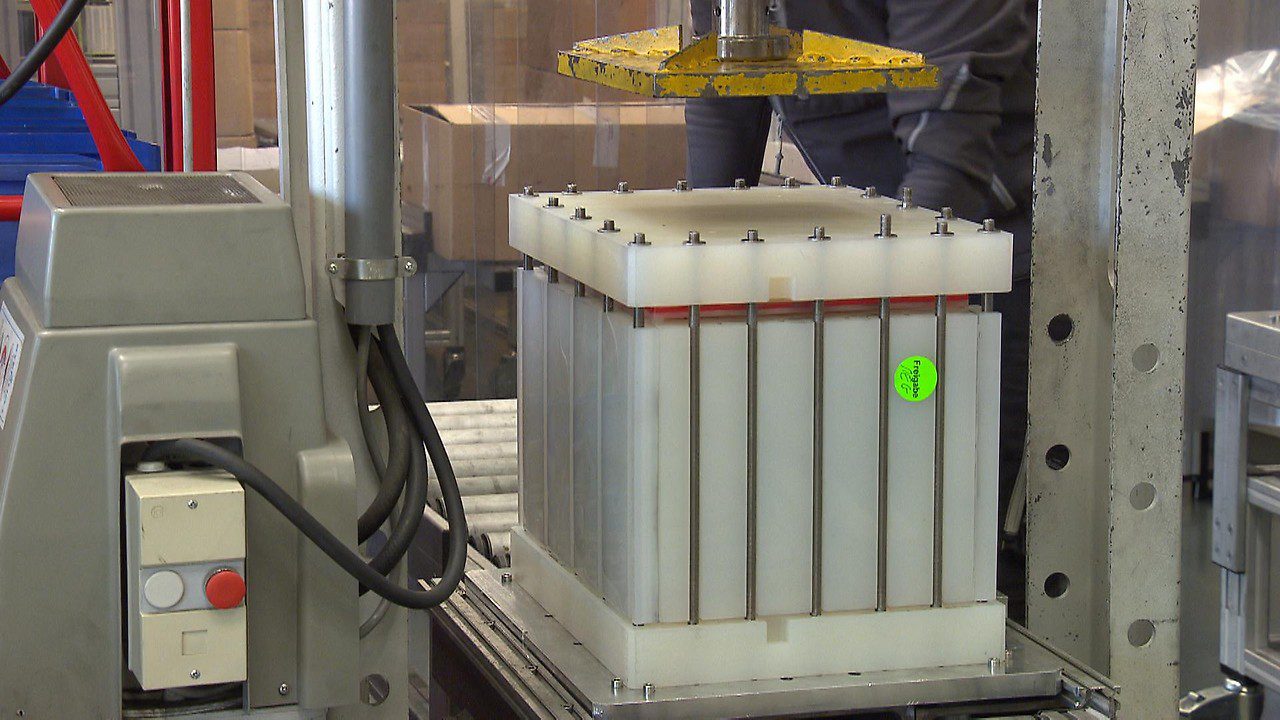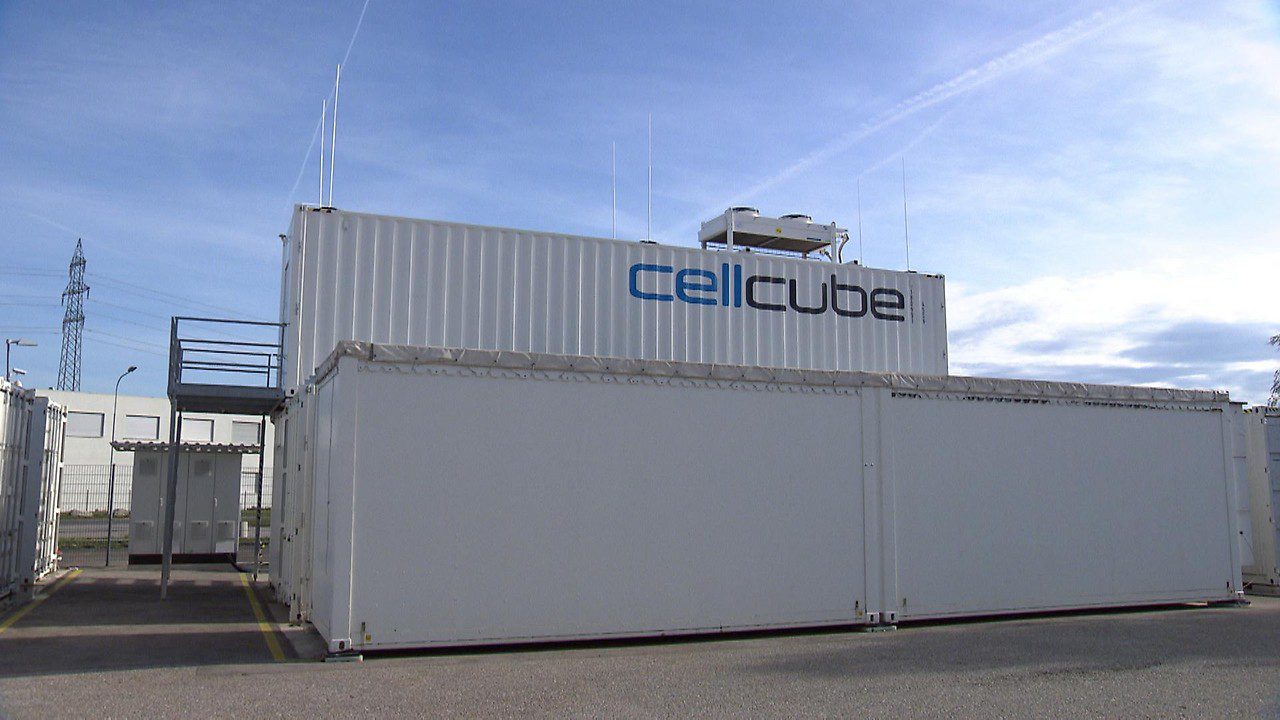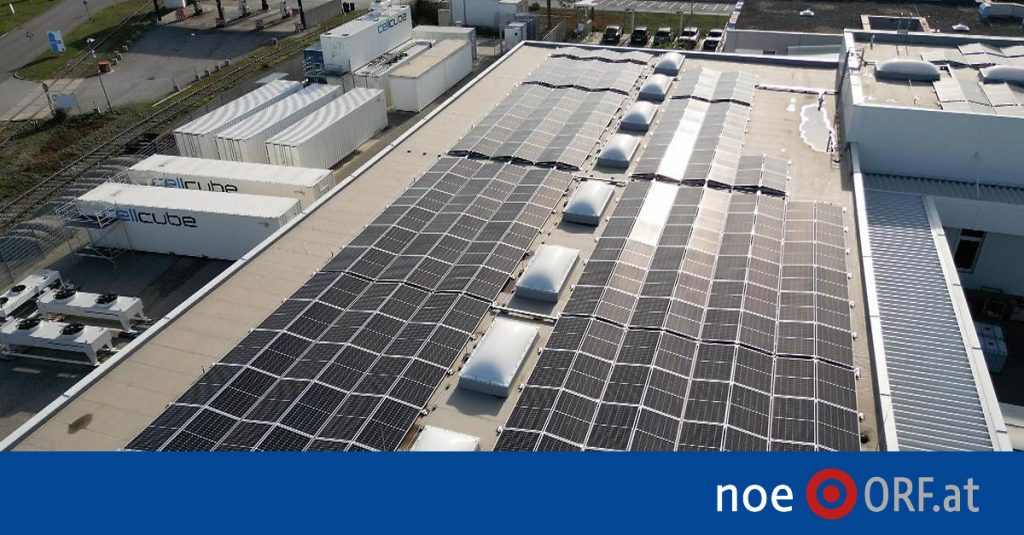What looks like a simple container on the outside is the so-called Cellcube – in other words: a massive battery. In containers at Wr. Neudorf (Mödling district) is manufactured by Enerox, and green electricity is stored on a large scale. “Specifically, we are producing a long-term storage device, i.e. a battery in which we can store electricity that comes from the sun or wind for several hours and then supply it when needed,” explains Managing Director Alexander Schönfeldt.
The company of Wr. However, Neudorf does not rely on lithium-ion batteries for storage, like those built into smartphones, but on vanadium. “Vanadium is an element. It is obtained mainly as an additive for steel refining. It is known, for example, as a wrench from vanadium and chromium,” says Martin Harrier, Head of Research and Development. “In our batteries, vanadium is dissolved and then the energy is stored in vanadium.”

Green electricity should be available around the clock
Cellcube storage solutions are already in use in more than 20 countries, such as Arkansas in the USA and Sweden and Uganda in Africa. The goal is to provide green electricity around the clock in the future, even when the wind isn’t blowing or the sun isn’t shining. Recently, Lower Austria is also working with Windkraft Simonsfeld.
In concrete terms, the feasibility study will look at how the storage system can be designed so that it can absorb as much wind and solar energy as possible. The grid can absorb a limited amount of electricity. When this amount is reached, the network operator regulates. This means that the wind farm is still standing or has less feed. Solar energy is no longer feeding into either of them. The moment that happens, our long-term storage system can absorb the excess electricity and wait until the grid is ready to absorb electricity again,” explains Schoenfeldt, managing director.

The batteries are durable and non-flammable
Battery cells are entirely produced in Wr. Neudorf. For this purpose, the provided vanadium electrolyte is first examined in detail, then the battery cells are assembled and pressed together and finally tested for leakage. Compared to regular batteries, vanadium has great advantages, says Harrier: “The first advantage is the service life. Our batteries live 25 years without loss of capacity. The second is security. Our batteries are non-flammable. The third is that our electrolytes are completely recyclable. This means that they can be Pump it up after 25 years and use it in the next battery.”
Last but not least, cellular cells must also provide energy when everything else is dark. Because even in the event of a longer power outage, the containers in Wr. Neudorf can be produced, and green electricity can continue to be purchased.

“Total coffee aficionado. Travel buff. Music ninja. Bacon nerd. Beeraholic.”








More Stories
Wealthy families take more risks when it comes to money.
Salesforce and NVIDIA Form Strategic Collaboration to Drive AI Customer Innovation
Changing banks causes problems for customers